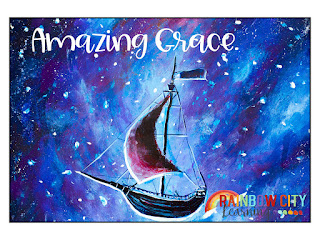"It's a country club over there," my parents could often be heard to say during my fifth and sixth grade years. We had just moved back to the neighborhood and new, progressive school that we had to leave after my Kindergarten year.

We had moved next door to my grandparents and my mom's large and loving family, so as a kid I wasn't aware of the financial difficulties that had caused the move "back home", just thrilled to be up in the business of my young aunts and uncle all.the.time. I was known as the world's youngest teenager, showing up at my Aunt Harriet's after school living room dance parties, and a careful observer of my Aunt Rhoda's makeup application and hair styling as she left for work or dates. They took me to the library every week for stacks of books, taught me to twirl a baton, and drove me to school. We had long and serious discussions about Elvis, Richie Valens, Buddy Holly, and the Big Bopper. A member of a for real actual singing group, The Tempos, actually lived across the street! Two of the songs that they briefly made famous were "Since I Don't Have You" and "See You in September". My grandma always said that Gene was a very nice boy who served his country. I think he was a friend of my uncle, but who knows? My uncle always seemed to be in his room studying. That room was the only space in my grandparents' house that was off limits to me, but that was ok. He knew nothing about hair and clothes and makeup, and I just went in to look around when he wasn't there. We danced the Strand. We drew and colored, knitted, cooked and ate together, laughed together, and took full part in each other's lives. I missed nothing in the area of life enrichments, and I liked my school and friends.
BUT... the summer before fifth grade, life was heading in a positive direction for my very young parents. My dad finished college, had a CPA practice, and was beginning to invest in deli restaurants among other businesses. They bought their first home, and I returned to my original school in fifth grade while my little sister started kindergarten. Our little brother was nine months old when we moved in, so no school for him yet!
Apparently, while I was gone, our public school system had decided to try out some new programs and practices at the newest building in their district. When I arrived in Miss Brooke's fifth grade, things were happening! Kids who were academically successful appeared to have been placed together in class, so there was never a chance to read any of the books that I had become used to shlepping to school with me every day for four years. (Well, actually three years. Too busy throwing up every day in first grade when reading groups started. Membership in the blue birds was not all it was cracked up to be.) Aside from watching super smart kids learning and responding and interacting on all sides, we had ENRICHMENTS! Yes, our district was on the cutting edge in the 60s with the very beginnings of gifted education. They didn't call it GT or anything like that, but in my opinion, they should have named it something because the confused young parents just called it a "country club over there".

At the "country club over there", we could leave our classrooms without having to make up anything that we missed while gone, and take Creative Dance, Art Enrichment, Science Explorations, and Chorus. We could also learn square dancing and polka. Yes, polka. It was Pennsylvania after all! As a dancing school dropout, I loved Creative Dance the most. Could not believe my good fortune at being part of a group with actual current dancing school students. (Being a dancing school dropout is absolutely true - I left Saturday morning dancing school for Saturday morning cartoons at the ripe old age of seven because I just couldn't keep up with the other dancers.) In Creative Dance, we were presented with music and could create our own choreography. It was amazing! My love for dancing, nurtured as the world's youngest teenager dancing with Bandstand every day, was restored!
I took that "country club at school" spirit with me throughout the rest of my education and my career as a teacher. As I got to higher grades, I learned perseverance. Perseverance made everything I tried to do better. Study and practice became enjoyable pursuits because there was always a goal ahead, a reason for persevering. I studied harder in French class so that I could spend more time in Ceramics class in high school. I studied for and passed out of basic language arts, foreign language, and math courses in college so that I could load up on Art History and Anthropology. And when I became a teacher, I tried to make sure that my own students had opportunities to explore the arts and sciences as much they possibly could. I did this through project based learning and through centers, including Inventor's Center, an early incarnation of STEAM. My students' journals always had a drawing/sketching/diagramming component. A kid more in tune with art could use more art than words and still succeed in journal writing. I can point to several professional artists today who have told me that they appreciated being able to journal through art in those elementary years.
After that loooonnnngggg intro, this post on Perseverance is turning to the importance of including the arts in an elementary education. We learn to be awesome dancers by dancing. We learn to be artists by crumpling papers, erasing, and starting again. We learn to be writers by writing. I always had two signs in my classroom: Good Writers Write and Good Readers Read. Perseverance is what makes us successful, and I believe that it is best learned in the pursuit of the arts.
When I was thinking of picture books to use with this important topic, I couldn't narrow it down any further than four. I simply took all four out of the library. You don't have to own every book that you touch. I donated three of these when I retired, and just discovered the fourth one. The public library is a great place to find books, especially books that you will use for a brief lesson. School libraries are another great source, if you are lucky enough to still have one. I won't speak badly here of the district that I retired from, but no librarians? Seriously?
The very first book that came to mind was
Dancing in the Wings by Debbie Allen. In this book, Sassy is a dancing school student who, unlike yours truly, persevered. She was "too tall" and her feet were "too big" for all the roles and participation that she longed for. Rather than drop out, she practiced, observed, and danced every dance from the wings, learning it as well as if she was on stage herself. Her hard work and perseverance pay off when a director of an important Washington dance festival notices her, chooses her from her entire dancing school and invites her to be part of a performance troupe. This is based on Debbie Allen's life and the experience of her daughter Vivian in dancing school.
Of course, a read of
Dancing in the Wings naturally leads to a read of
Brothers of the Knight also by Debbie Allen. It's an amazing retelling of the fairy tale "The Twelve Dancing Princesses", and in light of the recent public controversy over whether men should be dancers, it got my attention. In
Brothers of the Knight, Reverend Knight is a single father raising twelve sons. The story is narrated by their dog, Happy. Reverend Knight is befuddled by the fact that his sons' shoes are tattered, torn, and generally wrecked every morning, although they appear to have been sound asleep every night. A new housekeeper solves the mystery, and the brothers come clean about their passion for dancing. They had thought it necessary to sneak out to the ballroom at night because they thought that their father would disapprove. Reverend Knight marries the housekeeper, adds dance to his sermons, and all live happily ever after. Dancing with perseverance can sure wear out your shoes!
And speaking of shoes, a story from the childhood of Michael Jordan,
Salt in His Shoes, is another great example of how perseverance can lead to success. Michel Jordan was once a short child who wanted to play basketball with the neighborhood kids. He was shorter than they were and had a difficult time keeping up. He measured himself over and over, but never seemed to grow. His dad advised him to keep practicing and his mom advised him to put salt in his shoes and to pray every night to be just a little taller each day. Michael took the advice seriously, praying, salting, and PRACTICING at home. He eventually scored the winning point in a neighborhood game when another player was injured and unable to play. And... as we know.... he grew to be a famous six foot six pro basketball player! Was it the salt? Or the perseverance?
Amazing Grace by Mary Hoffman is also nothing short of amazing as a model for perseverance. Grace loves to read and to act. She loves stories - telling them, hearing them, acting them out. When she learns that her class is about to cast and perform "Peter Pan", Grace wants to be Peter. She is focused on her goal, and sticks with it through practice and auditions even though one classmate tells her that a girl can't play Peter, and another tells her that Peter is white. (Grace is African American.) Enter Grace's Ma and her Nana (gotta love the Nanas!), who inform Grace that those two kids who discouraged her don't know anything. Nana then takes Grace to a ballet performance where a famous brown-skinned dancer named Rosalie Wilkins ballet dances the part of Juliet in "Romeo and Juliet". After the performance, Grace adds the dance of Juliet to her practice, auditions for and gets the part of Peter Pan. Grace is an amazing Peter Pan, and according to her Nana, "If Grace put her mind to it, she can do anything she want." True for Grace. And true for all of our kids. Putting your mind to it is perseverance!
Sometimes I wonder what might have happened if I had chosen to stick with Chorus when I was told by the teacher to sit in the back where no one had to listen to me. I could have been a famous singer! Nah, I just pursued the arts that mattered to me. Teachers, the important thing is to present the arts as possibilities to our students. Let them tinker and explore. Let them respond to assignments and projects infusing a piece of the arts that is important to them. Find time for performances in class. There are ways! Make your room just a little bit of "a country club over there". You never know what future artist, dancer, singer, writer, or scientist is sitting right before your eyes!
Check out some of the STEAM resources at Rainbow City Learning to add a little art to the learning in your classroom!
Click below for a FREE introductory lesson on using the arts to teach perseverance.
To hear the thoughts of our "We Teach So Hard" blogging group on this topic with lots of book suggestions, just click!
For the blog posts of our We Teach So Hard podcasters, click below!









































